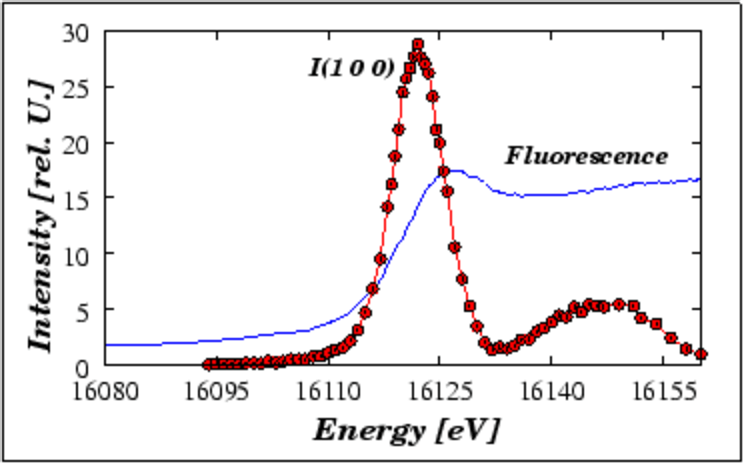
ANISOTROPY OF ANOMALOUS SCATTERING IN Sr(NO3)2
R. Fischer1,2 and A. Kirfel1
1 Mineralogisch-Petrologisches Institut,
Poppelsdorfer Schloß, D-53115 Bonn
2 c/o HASYLAB am DESY, Notkestr. 85,
D-22607 Hamburg
In the presence of AAS the x-ray diffraction intensities can no longer be described by scalar scattering factors. Instead one has to use complex, energy dependent tensorial scattering factors which are in agreement with the point-symmetry of the absorbing atoms [1].
In most cases this scattering factor tensors of rank two where sufficient to describe the observed intensities, although some exceptions requiring tensors of higher rank were recently reported [2,5].
Consequences of the AAS are Y-dependent intensities and particularly presence of so called ``forbidden'' reflections with significant intensities in resonances in the energy region of the absorption edges.
The examination of the Y-dependence, I(Y,h) of ``forbidden'' reflections has proved to be the most fruitful method in the investigation of AAS.
During our test-measurements with the scope of finding further structures which show AAS properties we found in Sr(NO3)2 an unusual strong effect at the Sr K-absorption edge (16105 eV) [4].
Sr(NO3)2 crystallises in space-group Pa3_, a=7.781 A [3] with Sr in 4a (0,0,0; point-symmetry 3_). The observed effect can be explained as a consequence of the anisotropy of the Sr surrounding. Geometrically Sr is surrounded by a stretched, along [111] squeezed oxygen coordination polyhedra with two different Sr-O binding lengths, 2.71 and 2.82 A.

In the above picture the intensity of I(100, E) can be
observed. The relative energy of the resonance to the energy of
the K absorption edge can be determined from the superposed
fluorescence spectra. Above the absorption edge a second, broader
resonance of smaller intensity can be observed.
We thank W. Morgenroth (F1 / HASYLAB) and H.-G. Krane (D3
/ HASYLAB) for experimental support. Financial support of this
work by the BMBF is acknowledged.